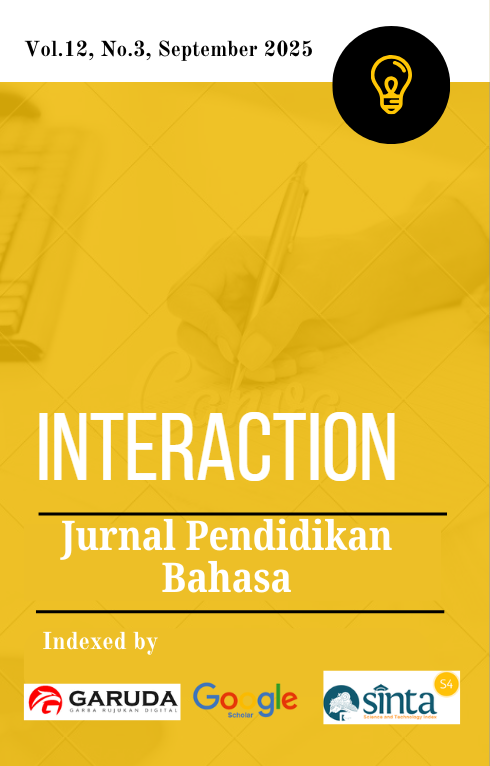Understanding Students' Views on English as the Medium of Instruction: Insights from Non-English Majors
DOI:
https://doi.org/10.36232/interactionjournal.v12i3.4066Keywords:
English as A Medium of Instruction (EMI), Non-English Major, Perceptions, Learning MotivationAbstract
This study explores the perceptions of non-English major students toward the use of English as a medium of instruction (EMI) in a general English class. The growing implementation of EMI in higher education aims not only to enhance students' English proficiency but also to prepare them for the academic and professional demands of a globalised context. However, for students outside English-related disciplines, this practice often presents both opportunities and challenges that require closer investigation. Using a qualitative approach, semi-structured interviews were conducted with four first-year students from various majors at a higher education institution in Manado, Indonesia. The interviews focused on students’ experiences, perceptions, difficulties, and motivation when taught in English. The findings revealed that while most students initially faced comprehension difficulties, particularly in understanding unfamiliar vocabulary and complex grammatical structures, they also recognised the long-term benefits of EMI. Students reported increased motivation, greater exposure to English in authentic contexts, and improvements in communication skills. Nonetheless, several participants emphasised the importance of employing adaptive strategies, such as incorporating bilingual explanations, interactive activities, and practical examples, to support understanding and alleviate anxiety. The study demonstrates that EMI has the potential to influence students' language development and learning attitudes positively. However, its effectiveness depends on how well teaching strategies address the diverse needs of learners with varying levels of proficiency. These insights provide valuable implications for lecturers and educational institutions in designing inclusive instructional models that balance English exposure with accessibility, ultimately fostering both language acquisition and academic success among non-English major students.








